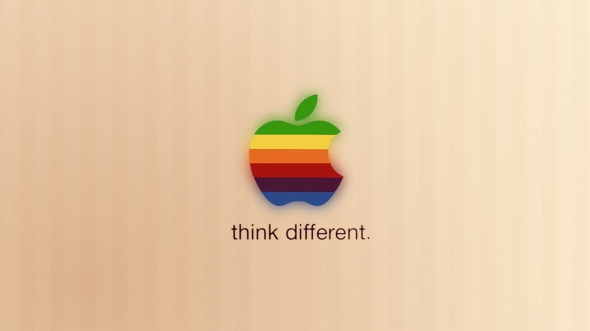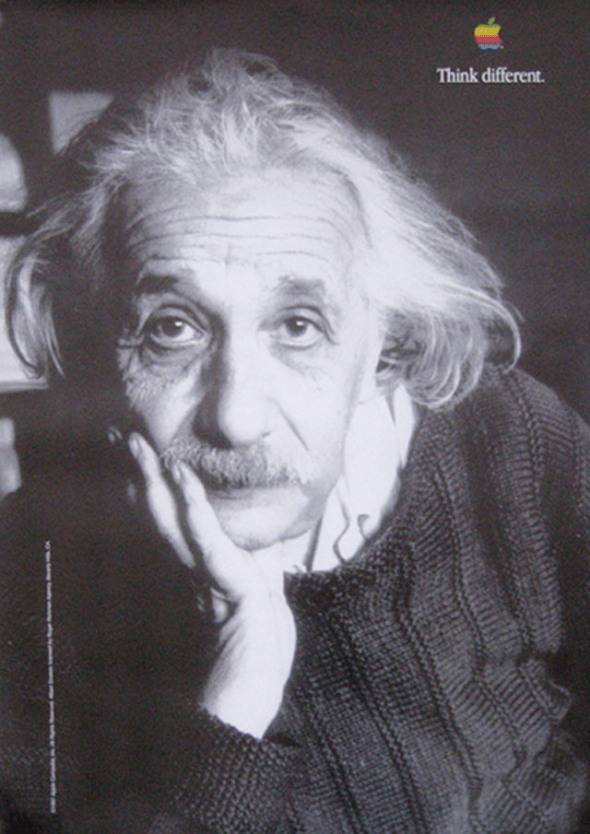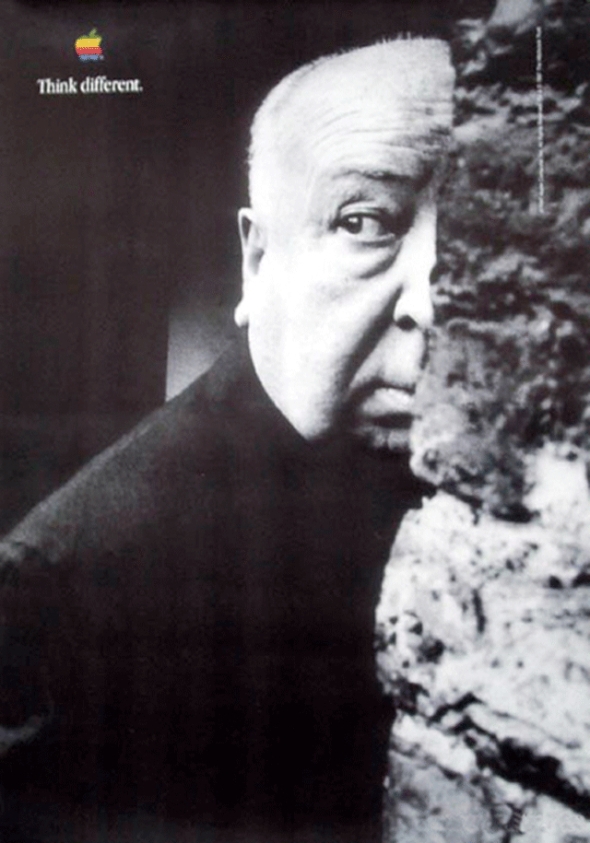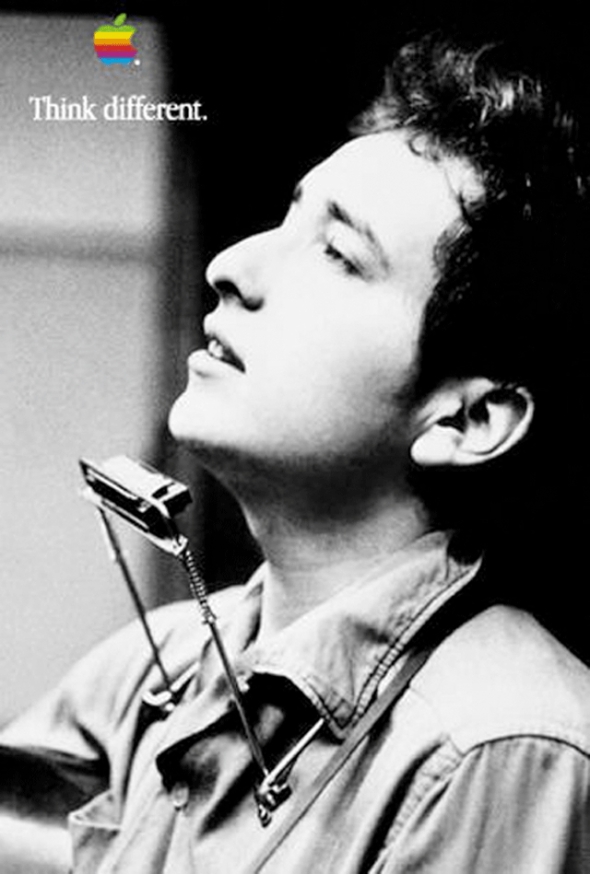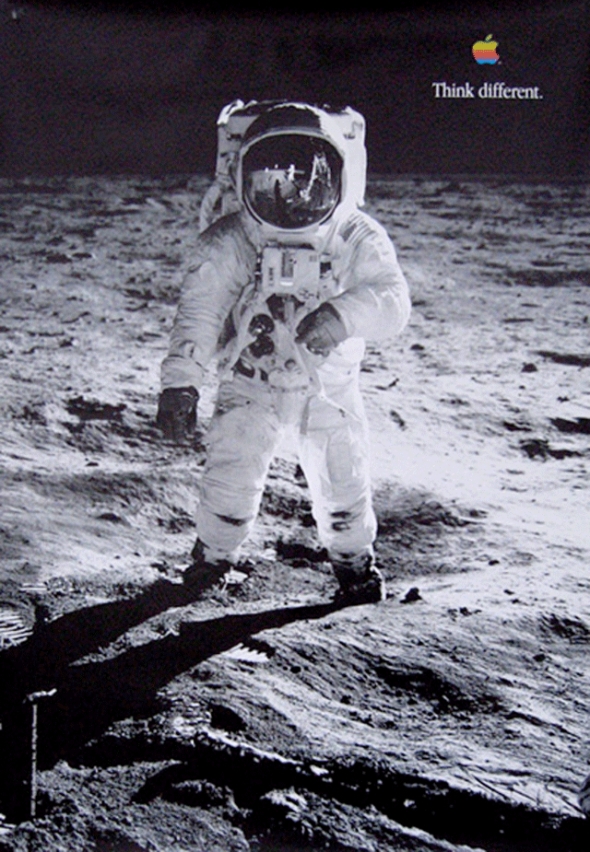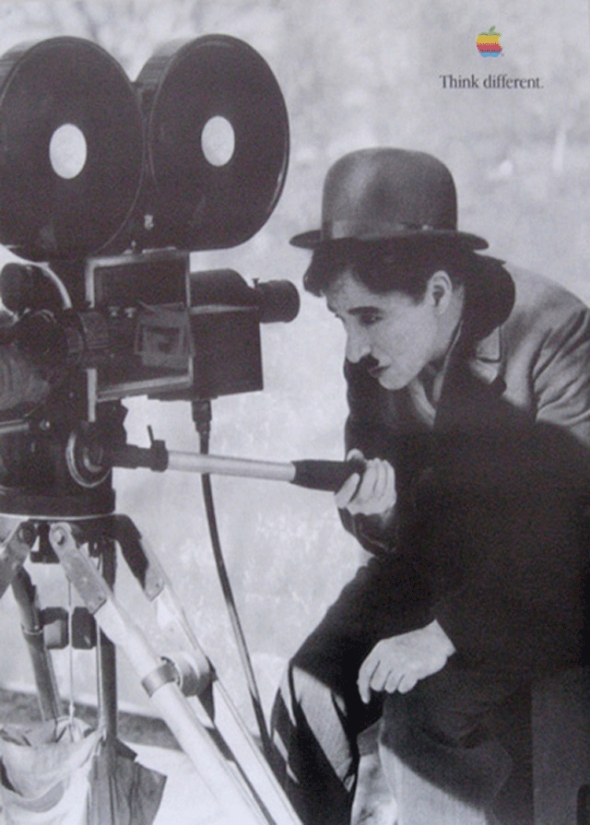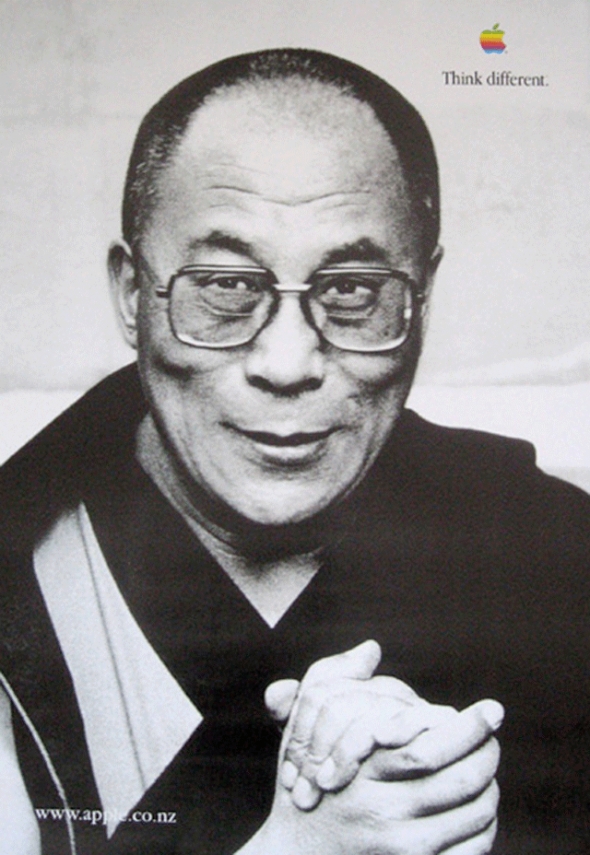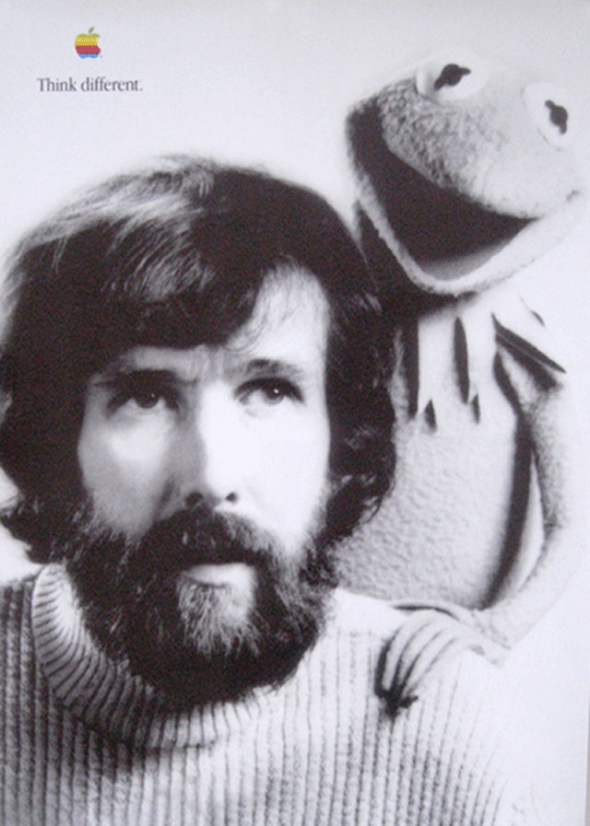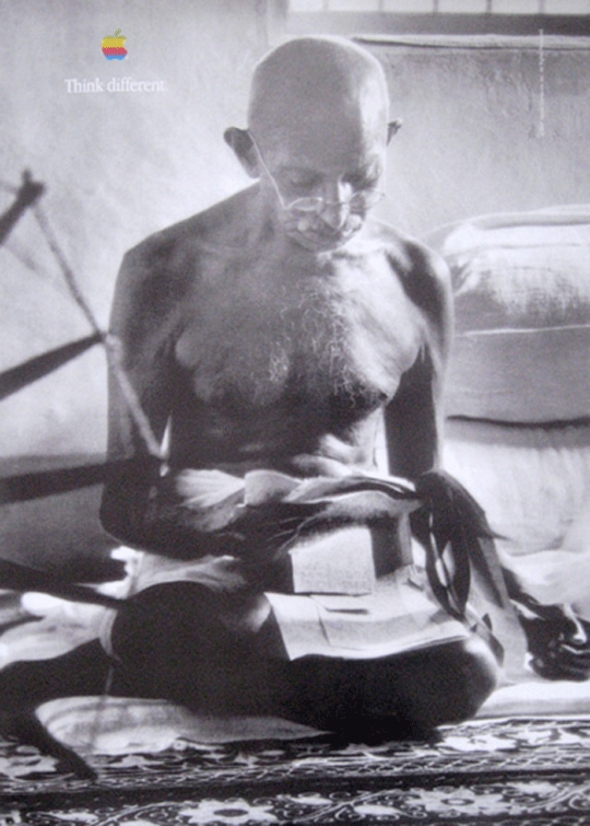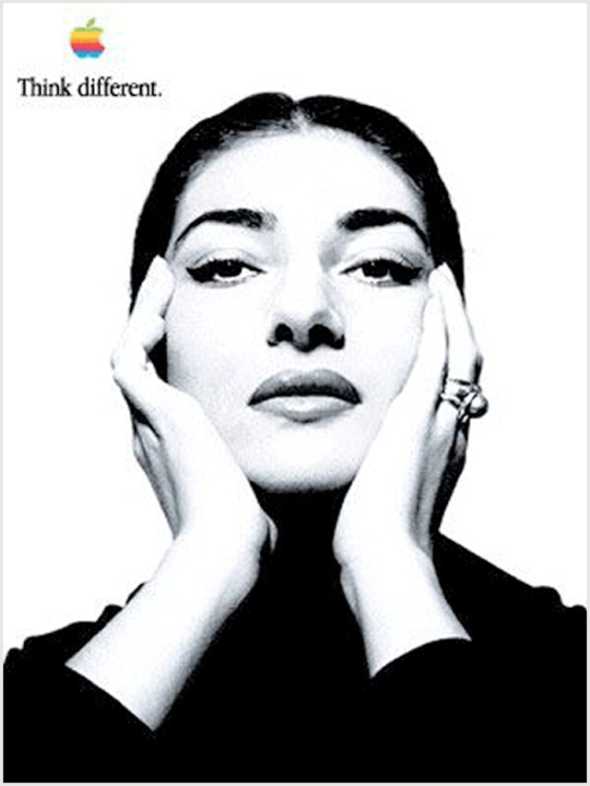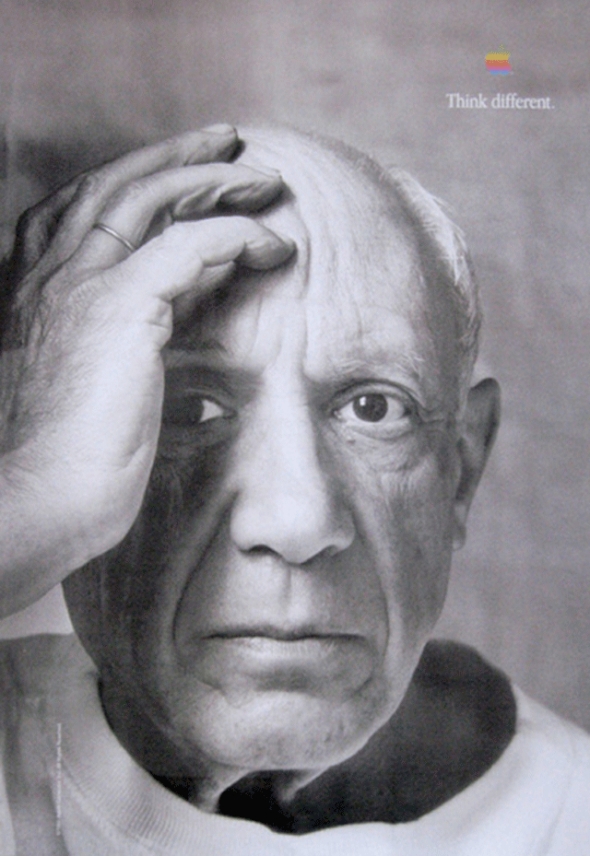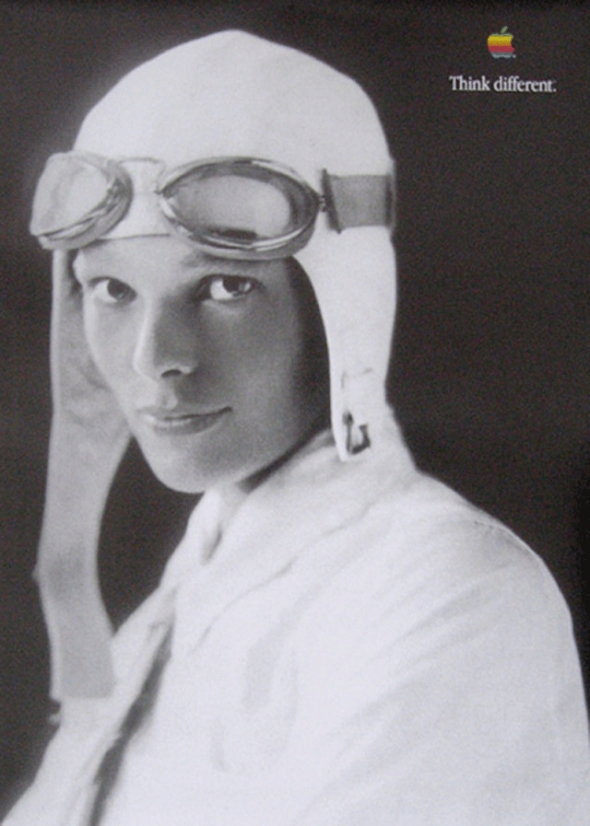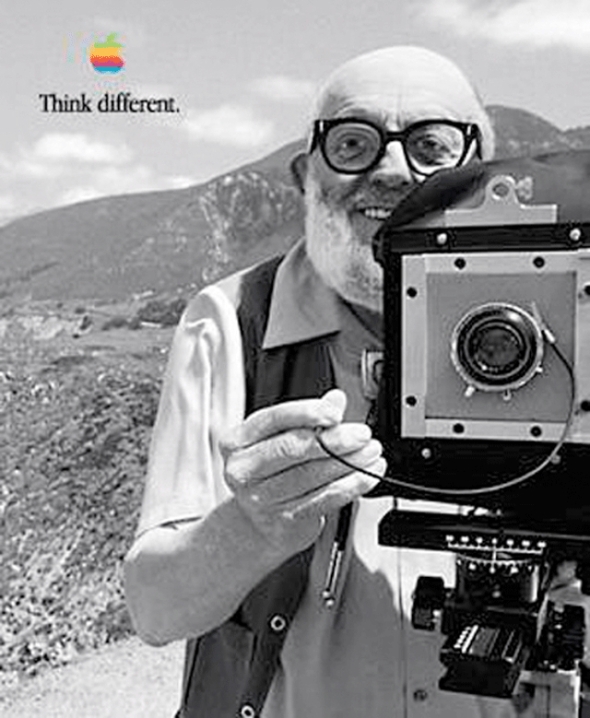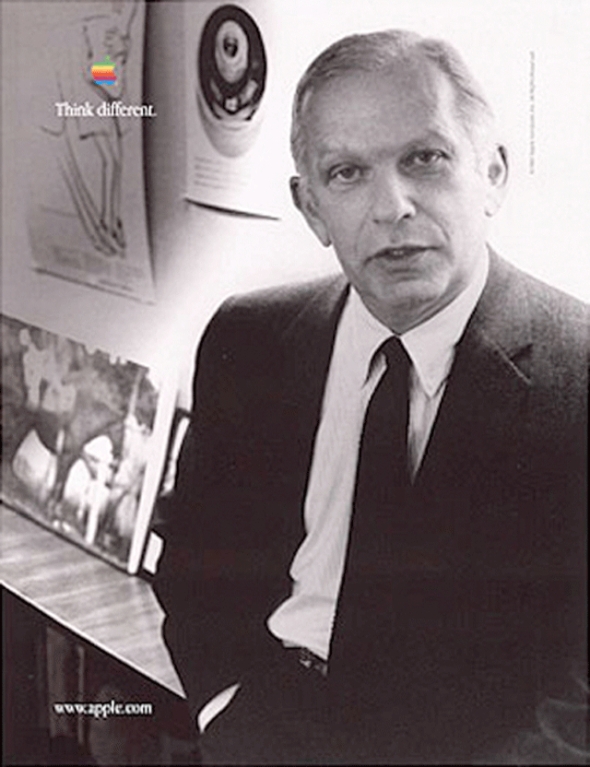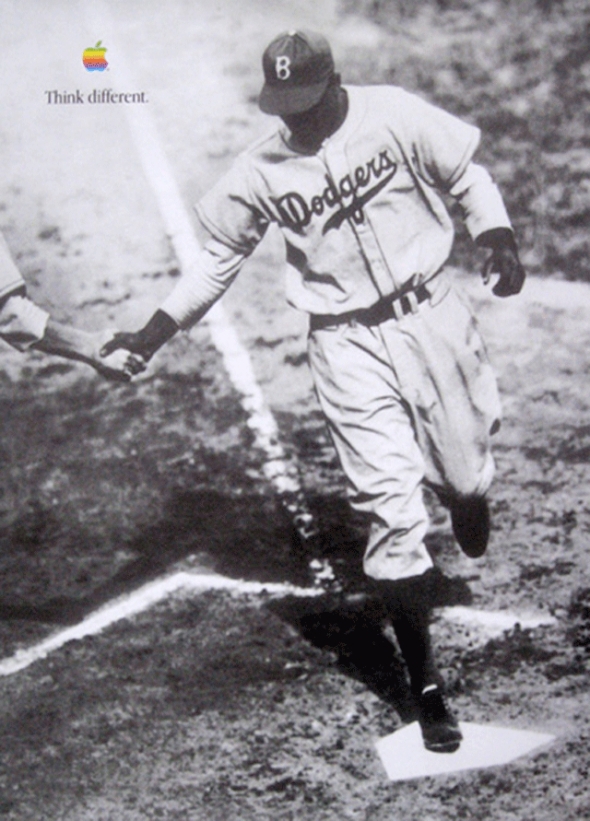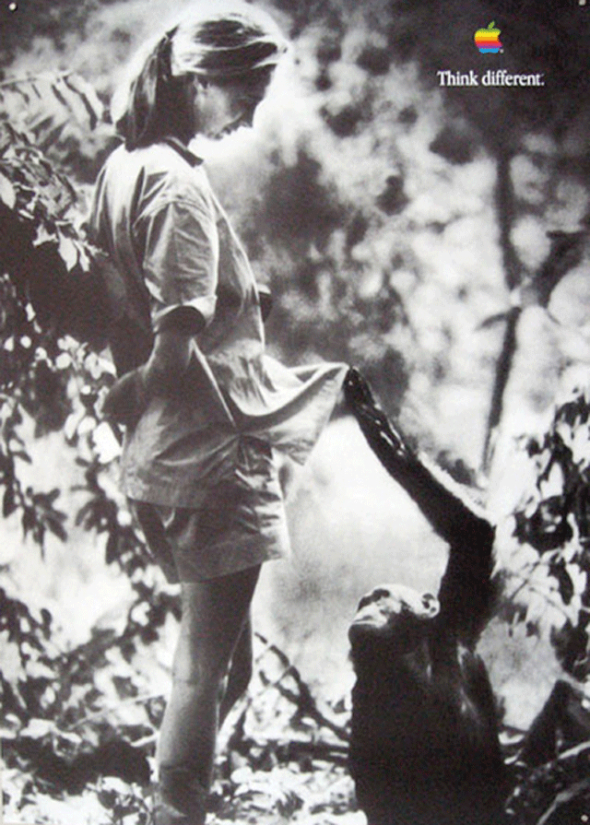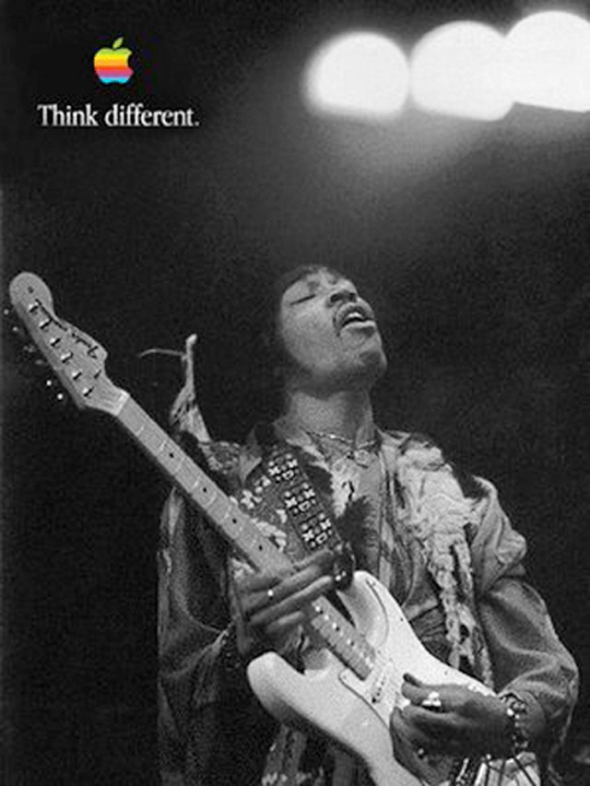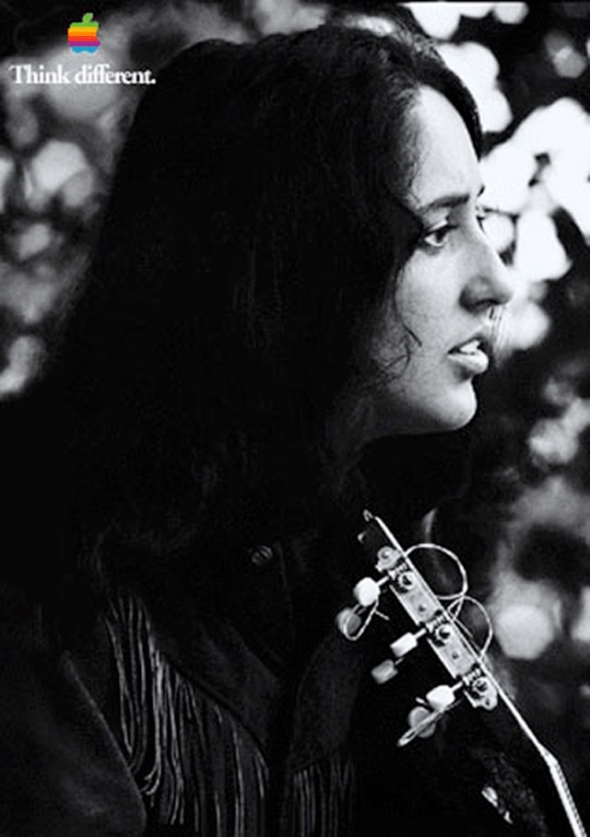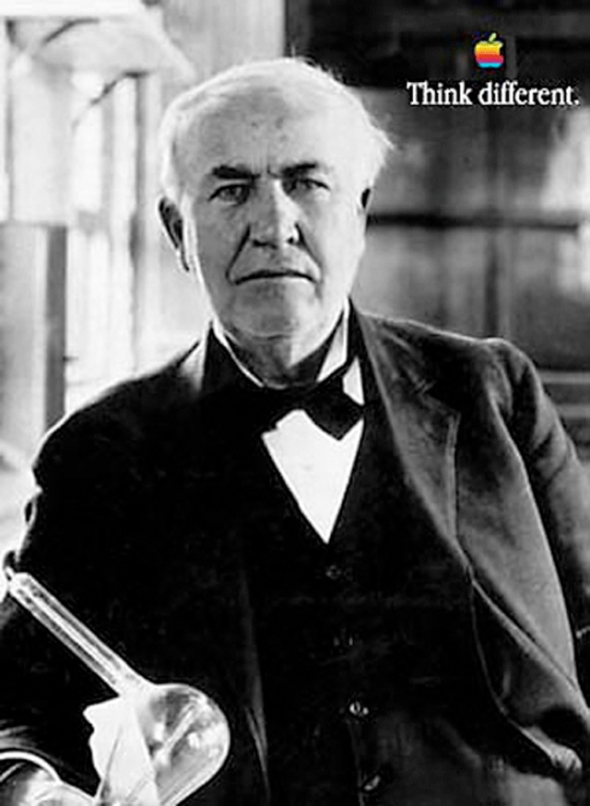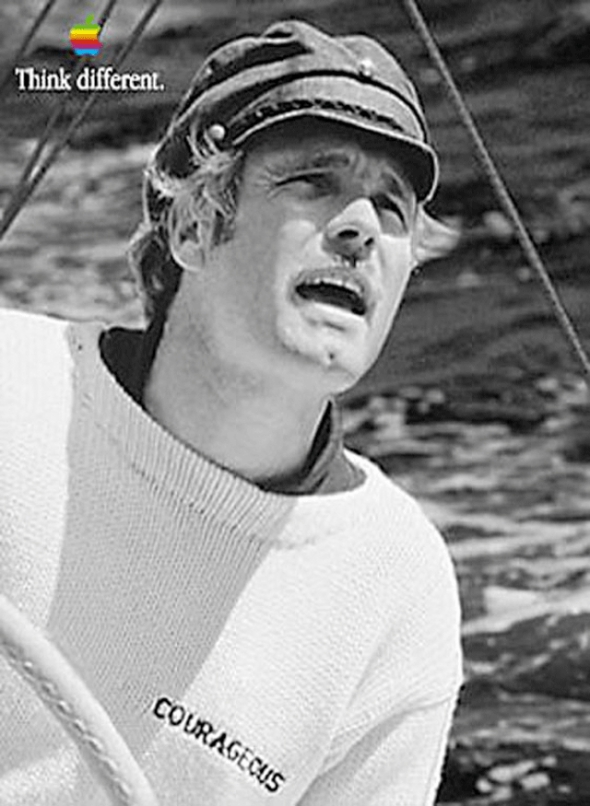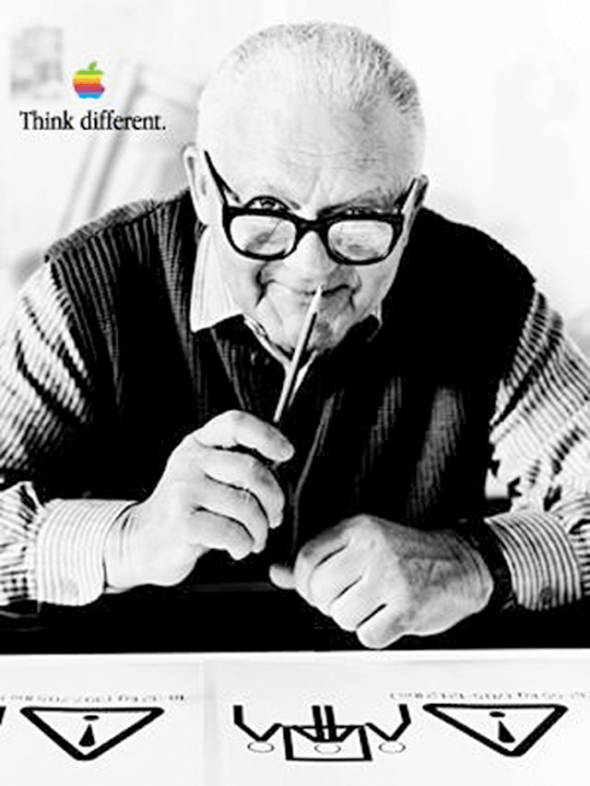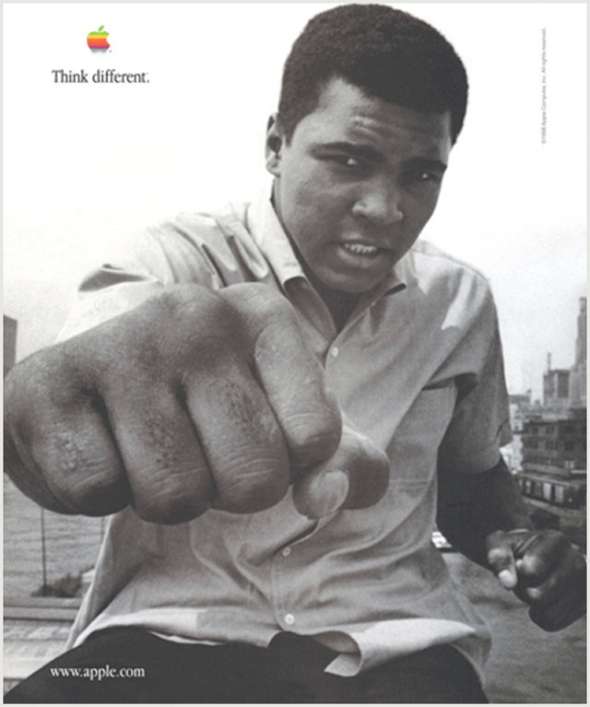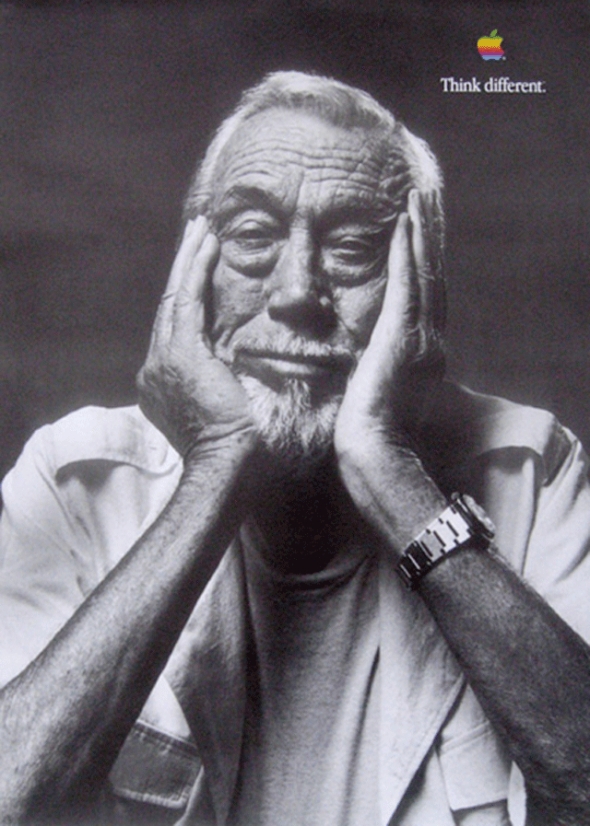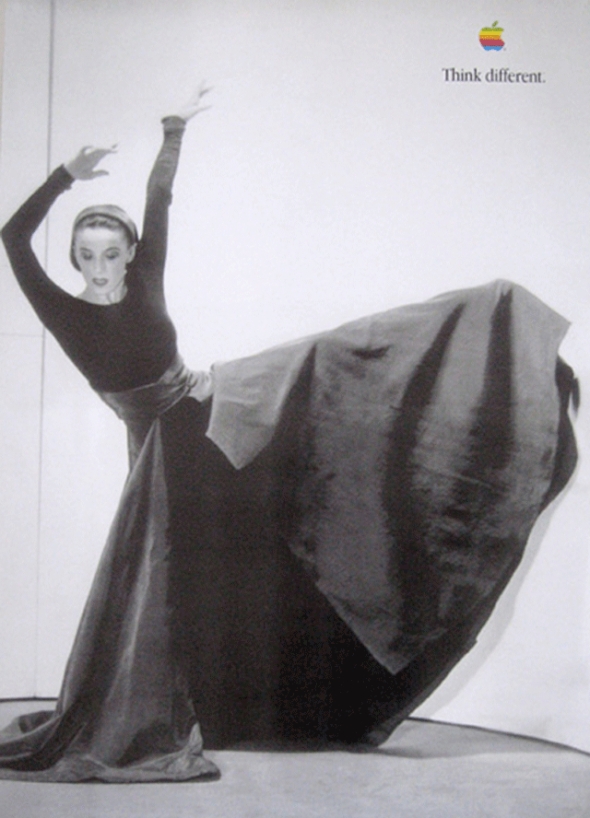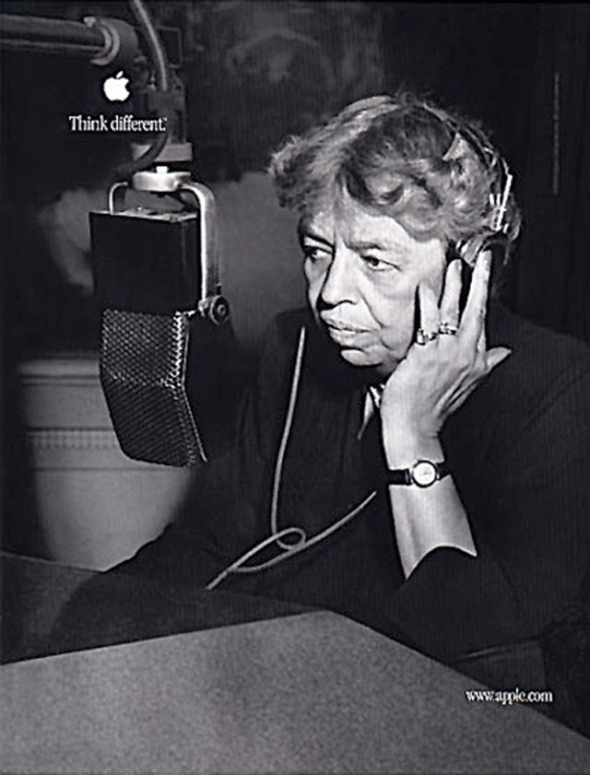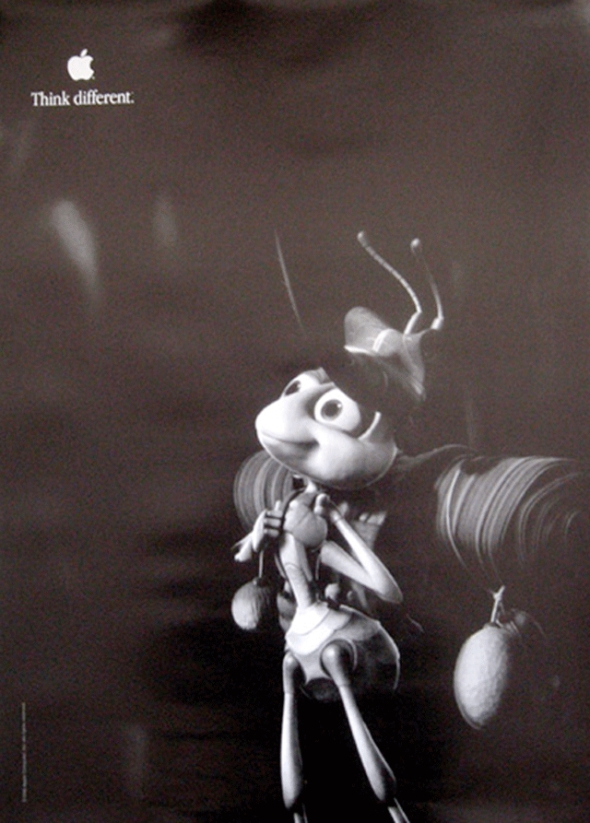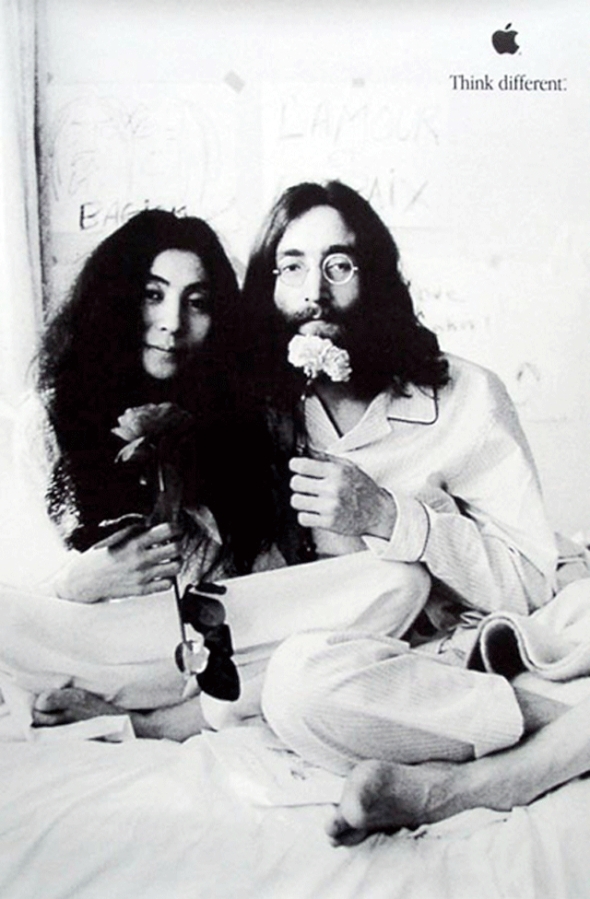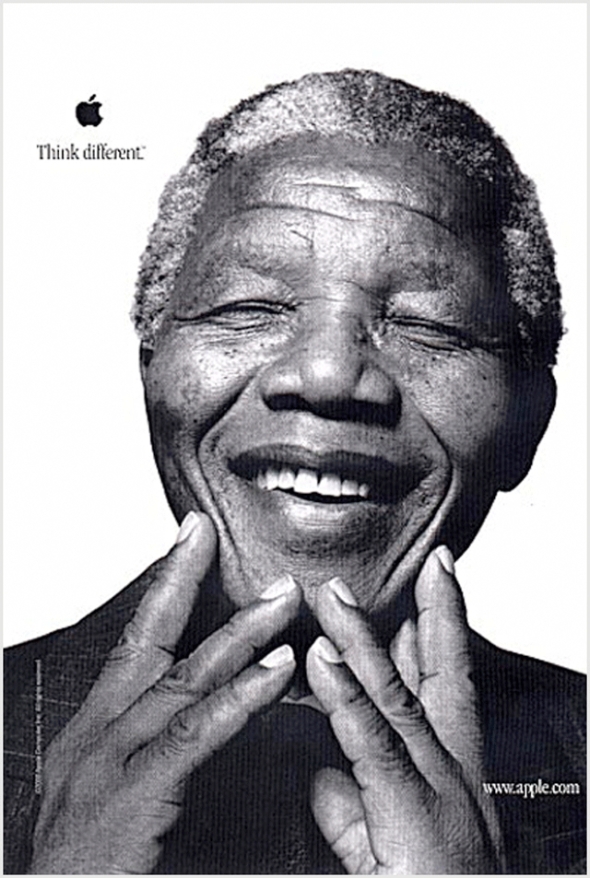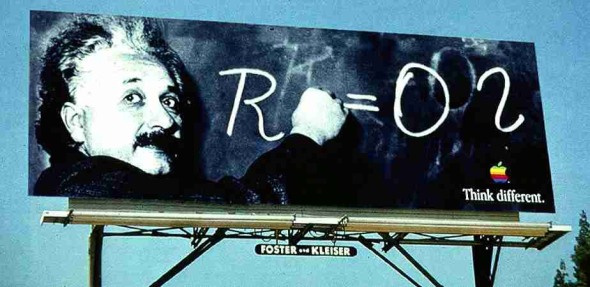Apple – Think Different
Posted: September 5, 2011 Filed under: Cannes Lions, Case History, Copywriting, Legendary, Press/Outdoor, TV/Film, USA | Tags: Albert Einstein, Alfred Hitchcock, Apple, Bob Dylan, Case History, Craig Tanimoto, Jennifer Golub, Jerry Seinfeld, John Lennon, Lee Clow, Mahatma Gandhi, Martin Luther King Jr, Mohammed Ali, Picasso, Steve Jobs, TBWA/Chiat/Day, Think Different, TV/Film, USA, yoko ono 2 CommentsThis is the story of one of the most successful campaigns in the history of advertising.
In August 1997 Jobs, who had cofounded Apple Computer in his garage 20 years earlier, returned to the company to become its interim chief executive officer. At that time Apple was in the midst of a crisis. Its share of the computer market had plummeted from a peak of 14 percent in 1993 to below 3 percent four years later. ‘‘The company was in a death spiral…’’ its chief financial officer, Fred Anderson, told Newsweek in 1998. Jobs set out to address the problems. He believed that Apple’s difficulties stemmed from the company’s incoherent agenda, which consisted of efforts to move various products without a clearly defined purpose or method. Jobs attempted to redefine the company’s strategy by concentrating on Apple’s key markets: design and publishing, education, and consumers who purchased personal computers for use in the home. He also cut Apple’s product line from 14 to 4. Jobs took charge of Apple’s image-making process as well. When he arrived back at the company, Apple was running more than 25 different advertising campaigns. The company’s domestic and international sales offices advertised independently from, and were often not coordinated with, the campaigns conducted from Apple’s headquarters in California.
Apple’s advertising agency during this period, BBDO, had opted to focus its advertisements on specific Apple products and the technological features of Apple computers. These efforts did nothing to allay consumers’ fears that Apple’s demise was imminent. ‘‘The talk of Apple going under was the worst thing for the company…’’ said Jessica Schulman, the TBWA\Chiat\Day art director for the ‘‘Think Different’’ campaign. ‘‘People won’t buy computer equipment that they think won’t be around in the next year.’’
Jobs invited three ad agency reps to present new ideas. Lee Clow, now the creative director for Chiat/Day, was one of them. On August 3, 1997, he presented a new slogan and aesthetic for Apple’s ads: Think Different (perhaps a reference to IBM’s famous “THINK” slogan) and montages of artists and creative professionals using the Mac. In an interview with Electric Escape, Clow said that he wanted to feature filmmakers at Dreamworks SKG working on their Macs. Jobs was enamored with the concept, though now using anonymous figures. And instead of Dreamworks filmmakers, he wanted to use celebrities and thinkers. Jobs had long been a fan of black and white portraits and prints. NeXT’s offices were decorated (expensively) with poster-sized prints from Ansel Adams, and Jobs’ manse in Los Gatos was decorated with black and white portraits of his heroes, including Albert Einstein. He began brainstorming on the spot. Chiat/Day was reinstated as the chief advertising agency, and Lee Clow became a regular presence on the Apple Campus. Although the ad was produced entirely by Chiat/Day staff (on Macs, of course), Jobs (sometimes with marketing staffers) reviewed revisions at every step of the process. He used a satellite uplink between City Center 3 and Chiat/Day’s Venice offices to review the clips in full video instead of relying on the mail or compressed files.
Chiat/Day used a totally computer based creative environment. Jobs gave the group 17 days after approval to complete the entire campaign. That included the television commercial and billboards for major markets such as Los Angeles and New York. An ordinary campaign for a more obscure client (or even Apple under Amelio) would have taken much longer just to get rights to the images. Jobs was particularly useful when Clow and his team needed to get usage rights from celebrities including Joan Baez (Jobs’ ex-girlfriend) and Yoko Ono (once a neighbor near Central Park when Jobs lived in the San Remo and Yoko in the Dakota). If Clow had approached these people’s publicists, he would be another adman. When Jobs called, he was a friend and a cult-figure in computer history.
The television commercial was produced using an Avid 4000 system on a Macintosh with Adobe AfterEffects. Jennifer Gulab, who worked on the television commercial, worked very closely with Jobs via satellite link. The two were in contact daily, working out which images would be used (a choice largely based on the availability of images and permissions), the music, and the narration, which was done by Richard Dreyfus. Dreyfus read a free-verse poem, “Here’s to the Crazy Ones”, written by a Chiat/Day copywriter, Craig Tanimoto. This was used extensively throughout the entire campaign. Rumours say that Steve Jobs wrote the original text, for this spot it’s been changed a little.
The commercial consisted of the blackand-white images of the 12 visionary thinkers including (in order) Albert Einstein, Bob Dylan, Martin Luther King, Jr.,Richard Branson, John Lennon (with Yoko Ono), R. Buckminster Fuller, Thomas Edison, Muhammad Ali, Ted Turner, Maria Callas, Mahatma Gandhi, Amelia Earhart, Alfred Hitchcock, Martha Graham, Jim Henson (with Kermit the Frog), Frank Lloyd Wright and Pablo Picasso and the reading of a manifesto read by actor Dreyfuss. ‘‘Here’s to the crazy ones,’’ began the voice-over. ‘‘The misfits. The rebels. The troublemakers. The round pegs in square holes. The ones who see things differently. They’re not fond of rules. And they have no respect for the status quo. You can quote them, disagree with them, glorify or vilify them. About the only thing you can’t do is ignore them. Because they change things. They push the human race forward. And while some may see them as the crazy ones, we see genius. Because the people who are crazy enough to think they can change the world are the ones who do.’’ The commercial ends with an image of a young girl, Shaan Sahota, opening her closed eyes, as if to see the possibilities before her.
‘‘Think Different” celebrates the soul of the Apple brand—that creative people with passion can change the world for the better,’’ Jobs told the Wall Street Journal Europe in April 1998. Apple wanted to kick off the campaign in dramatic fashion and decided that the first advertisement should run on television during the September 28, 1997, network television premiere of A Toy Story on ABC. Although difficulties in obtaining the rights to use and publish the photographs of the subjects of the campaign nearly caused Apple to miss its target, the 60-second spot aired as planned.
A shorter version was also produced. It used many of the people above, but closed with Jerry Seinfeld, instead of the young girl. This commercial aired only once, during the series finale of Seinfeld.
The first rule of the campaign was that there would be no products in the ads. Clow and the rest of the creative team were very concerned with appearing to exploit the artists who’s images they used. Instead of being paid, all of the participants (or their estates) were given money and computer equipment to be donated to the charities or non-profits of their choice.
To reinforce the message of the television commercials, Apple conducted a brief second phase of the campaign and ran print ads in major newspapers, including the New York Times and the Wall Street Journal, that consisted of the text of the manifesto and some of the images from the television campaign.

The choice of the tagline ‘‘Think Different’’ rather than ‘‘Think Differently’’ was deliberate. Even though ‘‘Think Different’’ drew public flak for not being grammatically correct, Apple settled on the line because it ‘‘conveyed a total change in the whole body of what you think about,’’ said Jessica Schulman, art director at TBWA\Chiat\Day. ‘‘Instead of thinking in your everyday way, ‘Think Different.’’’
The print and billboard ads were also unique.
Instead of sticking to Mac and general computing magazines, Apple bought space in popular magazines and fashion magazines. Outside advertisements were practically unheard of in the computer industry, but Chiat/Day rented hundreds of major spaces in New York and Los Angeles – and still does.
Since they had little time, instead of making full scale replicas of posters for bus stations or billboards in major cities, Jessica Schulman just imposed her mockups onto street scenes to give her colleagues an idea how her designs would look. She also collaborated with Jobs, exchanging images on the Internet and making constant revisions.
The print campaign was much more elaborate than the television commercial. Over the years there have been dozens of different personalities on the posters. In the end it has become difficult to say which images are original, and which are fake. After the first campaign, Apple started sending complimentary posters to public schools across the nation featuring different celebrities (including Pablo Picasso, Jane Goodall, and Ron Howard) to hang in classrooms. The complete packets now sell for hundreds of dollars on some websites.
The ‘‘Think Different’’ ads reached out to what Apple termed its ‘‘installed base,’’ those consumers who had purchased Apple computer equipment in the past.
Apple consistently performed well in three core markets: designers and desktop publishers, educators and students, and home users. It was these groups that were most likely to have bought Apple products and who were keeping the company afloat during its downturn. But with the publicized record of Apple’s financial troubles, many of them were not purchasing new Apple systems for fear that the company would soon fold, leaving them with obsolete machines. ‘‘Our number one priority was to make people realize that we were still here and still fighting for this brand,’’ said Rhona Hamilton, a marketing representative for Apple. In order to appeal to these users, the campaign stressed the creative roots of the Apple brand. The people who were selected to appear in the ‘‘Think Different’’ campaign were bold thinkers, men and women who were not merely great in a certain field but who were also innovative and independent and who had changed the worlds in which they moved. By aligning itself with the likes of Muhammad Ali, Bob Dylan, and Albert Einstein, Apple clearly strove to deliver a message about itself and its products. ‘‘After talking to a lot of consumers and Macintosh enthusiasts, our strategic direction was to stop acting like a computer company and start acting like a company dedicated to creative thinking,’’ said Schulman. The ‘‘Think Different’’ ads stressed that Apple was an innovative company that, with its creative users, could change the world. With these images and themes, Apple hoped to appeal to its core markets, people who as artists, illustrators, designers, and students valued their own creativity and who viewed themselves as being somewhat outside the mainstream. As Brandweek noted, ‘‘‘Think Different’ [was] clear that it [was] not targeting its message to everyone.’’

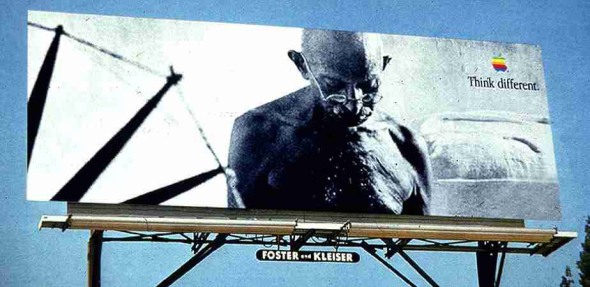
The ‘‘Think Different’’ campaign elicited an outpouring of opinions. Apple’s headquarters was inundated with letters, faxes, phone calls, and E-mails commenting on the campaign. Some questioned the cast of innovative thinkers included in the ads, others were perplexed by the message, and still others were delighted with Apple’s attempt to pay tribute to its heroes. People formed websites spontaneously, discussing who the individuals were, whether the phrase ‘‘Think Different’’ was grammatically correct, and why Apple’s ad campaign would focus on a group of people who for the most part had never touched a computer. Apple and TBWA\Chiat\Day considered the attention paid to the campaign to be a sign of its impact.
At first the advertising industry praised the ‘‘Think Different’’ campaign. The December 15, 1997, edition of USA Today listed Apple’s ‘‘bolder’’ ads as one of the year’s best campaigns. As reported in the same article, ad agency creative directors ranked the campaign as the second best of the year. On May 18, 1998, Advertising Age also voiced its approval: ‘‘The decision to celebrate the kind of independent thinking that has always typified Mac users seems now to make total sense.’’ In fact, the article stated, ‘‘the shots of heroes, geniuses, wildmen, and iconoclasts assembled here makes a strong emotional statement for Apple’s underdog role.’’
Not everyone loved ‘‘Think Different,’’ however. At first Apple had to contend with criticism for launching a ‘‘campaign of dead people.’’ Apple marketing representative Rhona Hamilton spoke of having to educate consumers about what the campaign was attempting to convey. CMP Techwire reported that the company was drawing bad press for undertaking an expensive marketing effort during a period of financial losses. A USA Today Ad Track survey revealed that consumers preferred Intel’s ‘‘Bunny People’’ spots, which were ranked as the most popular technology-industry commercial of 1997.
The campaign had a positive effect on Apple’s bottom line. In April 1998 Apple reported its second straight profitable quarter after nearly two years and $2 billion in losses. Apple attributed the increasing sales to the ‘‘Think Different’’ campaign. ‘‘It let people know that we’re still around and not going anywhere, so that they can feel good about buying the product,’’ said Hamilton. Apple’s market share rose to 4.1 percent. Unfortunately for Apple, the computer maker’s American market share hovered at about 5 percent for the campaign’s final four years. Advertising critics began discrediting ‘‘Think Different’’ for limiting the Apple brand to the small minority of ‘‘revolutionaries’’ that used computers. ‘‘For years, the Apple brand has been associated with artists, writers and designers,’’ Sandra Garcia wrote in the August 2, 2002, issue of Shoot, an ad-industry magazine. ‘‘The so-called ‘creative types’ who seemingly belonged to this secret society of Mac users while the rest of the working public toiled in a clunky PC world.’’
The ads won a slew of awards and developed a cult-following. In 1998 the television spot won the second annual primetime Emmy Award for best commercial from the Academy of Television Arts & Sciences (ATAS). The ad also won a Belding, a Silver Lion and a Gold Lion at Cannes. The long-term campaign won an Effie award for marketing effectiveness. After the first campaign, Apple started sending complimentary posters to public schools across the nation featuring different celebrities (including Pablo Picasso, Jane Goodall, and Ron Howard) to hang in classrooms. The complete packets now sell for hundreds of dollars on some websites.
The campaign ended in 2002.
Advertising Agency: TBWA/CHIAT/DAY, Los Angeles
Chief Creative Officer: Lee Clow
Creative Directors: Ken Segall/Rob Siltanen/Eric Grunbaum/Amy Moorman
Art director: Jennifer Golub/Jessica Schulman/Margaret Midgett,/Ken Younglieb/Bob Kuperman/Yvonne Smith/Susan Alinsangan
Copywriter: Craig Tanimoto
